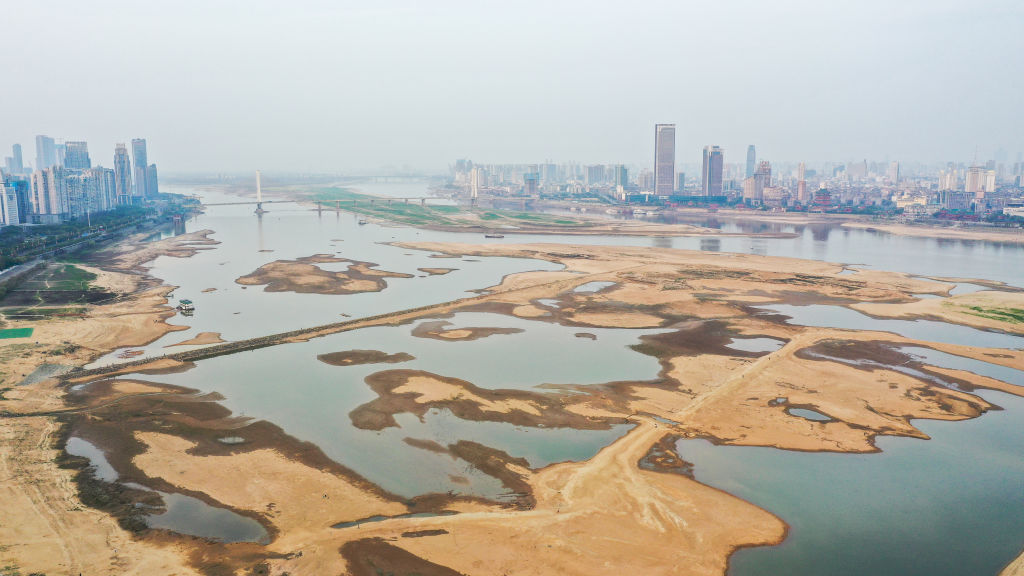How climate change is shaping China’s domestic security choices
Posted By Genevieve Donnellon-May on April 18, 2023 @ 11:15

Last month’s UN water conference [1] has sparked renewed global attention on the management of water, particularly for domestic and agricultural uses.
Water has long held a special significance in China, where it’s said that unique hydrological conditions led to the creation of three miracles [2]: the nation, its civilisation and its people.
In recent decades, China’s domestic security has become increasingly intertwined with climate change, forcing Beijing to rethink its approaches to water and food security. Despite having to feed 20% of the world’s population, China only has 7% of the planet’s arable land and 6% of its fresh water [3]. Both are heavily contaminated, raising fears of water and food shortages.
Interconnected water issues have long plagued China’s leaders. Despite being one of the top five countries in terms of freshwater resources on a per capita basis, China faces serious problems [4]. The country’s low and variable precipitation and the uneven spatial distribution of water resources between the north and the south are compounded by overuse [5] and pollution.
Climate-change-induced extreme weather such as droughts and severe flooding exacerbate these issues, with frequent coastal flooding, melting glaciers, storm surges, coastal erosion and saltwater intrusion. It’s estimated that 1% of China’s GDP [6] is lost annually due to flooding alone.
Beijing’s leaders are acutely aware [7] of the importance of water in maintaining social stability and ensuring the regime’s survival. The government has focused on engineering its way to water security, an approach traceable in part to Mao Zedong’s idea that man must conquer nature. This is reflected in the state’s construction of large-scale hydroengineering projects including dams and inter-basin water-transfer projects.
Beijing has also encouraged more innovative solutions such as the ‘sponge city’ initiative [8] to manage floods and improve drainage in urban areas; alternative water-supply systems, such as using treated wastewater; and cloud seeding. Education on these issues is being improved through citizen science [9] and the appointment of ‘river chiefs’. In 2022, China invested US$162 billion nationwide [10] to develop projects for water resources, a 44% year-on-year increase.
The Chinese Communist Party has used food security and stability to help maintain its legitimacy and ensure that it maintains power. For those of older generations, including President Xi Jinping, fears of famines and political instability during and after the Great Famine in the late 1950s and early 1960s remain front of mind.
China is the world’s largest producer of meat and of cereals such as corn, wheat and rice, but in response to increasing food insecurity globally and domestically, Beijing frequently emphasises the importance of increasing production through policy measures. Xi has publicly linked food security to national security.
Climate shocks in recent years have significantly affected production, raising fears of food shortages as well as an increase in crop pests and diseases. In 2022, severe drought [11] across the Yangtze River basin, home to China’s rice production, laid bare 2.2 million hectares of arable land and killed numerous livestock. In 2021, Henan Province, which produces an estimated 10% of China’s pork, 10% of its corn and 25% of its wheat, received a year’s rain in three days [12].
To lessen China’s reliance on imports linked to geopolitical risks such as the Ukraine conflict and economic and technological decoupling from the United States, Beijing has emphasised self-sufficiency in agricultural production in the face of increasing climate impacts. It has backed its food-production policies with enormous financial resources [13].
To achieve targets such as for soybean [14] production, Beijing is also implementing significant policy measures [15] and providing investment in fields such as biotechnology. Areas of focus include genetically modified crops and lab-grown meat [16], technologies such as autonomous machinery, and a push to develop its own agricultural giants [17]. There are plans for major improvements to soil, land, and water quality, and deferring sowing time to avoid unfavourable weather is encouraged.
Beijing is seeking to reduce food demand and waste through the sort of anti-waste campaigns led by Xi in 2013 and 2020, and a related food security law. It is diversifying imports, using different forms of transport, source countries and trade routes via a ‘food silk road [18]’ to lessen reliance on one country or one region in the face of growing demand from an expanding urban middle class seeking better-quality food. The government aims to acquire farmland and agricultural companies and infrastructure in other countries, including under its Belt and Road Initiative.
Climate change is already shaping China’s economic, foreign, domestic and security policy choices, as Chinese authorities’ responses to interlinked water and food security challenges demonstrate. Beijing is aware that failure to ensure food and water security could cause significant socioeconomic and political upheaval.
While such measures may have safeguarded China’s food and water security for now, the long-term situation is far less certain, particularly when the continued middle-class expansion and competing water demands are considered. Given the increases in frequency, duration and intensity of extreme weather events that exacerbate water scarcity, it remains to be seen how successfully Beijing can manage these problems.
Article printed from The Strategist: https://www.aspistrategist.org.au
URL to article: https://www.aspistrategist.org.au/how-climate-change-is-shaping-chinas-domestic-security-choices/
URLs in this post:
[1] UN water conference: http://global.chinadaily.com.cn/a/202303/24/WS641d3797a31057c47ebb6604.html
[2] three miracles: https://www.tandfonline.com/doi/abs/10.1080/02529203.2018.1414413?journalCode=rssc20
[3] 6% of its fresh water: https://www.undp.org/china/news/undp-enhances-management-techniques-chishui-city-officials-training-payment-ecosystem-services
[4] China faces serious problems: https://papers.ssrn.com/sol3/papers.cfm?abstract_id=2881303
[5] overuse: https://www.nature.com/articles/s41467-020-14532-5
[6] 1% of China’s GDP: https://blogs.worldbank.org/eastasiapacific/nature-based-solutions-china-financing-sponge-cities-integrated-urban-flood
[7] acutely aware: https://www.nature.com/articles/536028a
[8] sponge city’ initiative: https://en.wikipedia.org/wiki/Sponge_city
[9] citizen science: https://www.mdpi.com/2071-1050/12/9/3754
[10] US$162 billion nationwide: https://www.chinadaily.com.cn/a/202301/14/WS63c1f251a31057c47eba98a5.html
[11] severe drought: https://www.scmp.com/economy/economic-indicators/article/3193157/chinas-record-breaking-drought-hits-major-rice-growing
[12] in three days: https://chinadialogue.net/en/climate/how-climate-change-exacerbated-the-2021-henan-floods/
[13] enormous financial resources: https://www.rsis.edu.sg/rsis-publication/idss/ip23032-chinas-agricultural-power-strategy-what-is-it-all-about/#.ZCVPnHZBzb2
[14] soybean: http://k.sina.com.cn/mediaDocList.d.html?uid=5919519066
[15] policy measures: https://thediplomat.com/2022/02/chinas-focus-on-food-security/
[16] lab-grown meat: https://thediplomat.com/2022/05/hungry-chinas-growing-interest-in-future-foods-and-alternative-protein/
[17] own agricultural giants: http://www.gov.cn/xinwen/2022-12/15/content_5732088.htm
[18] food silk road: https://www.lowyinstitute.org/the-interpreter/china-s-food-dilemma
Click here to print.